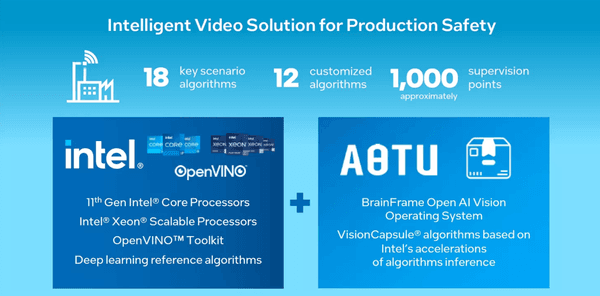Compare deep learning frameworks: TensorFlow, PyTorch, Keras and Caffe
TensorFlow
TensorFlow is an end-to-end open-source platform for machine learning developed by Google. It has a comprehensive, flexible ecosystem of tools, libraries and community resources that lets researchers push the state-of-the-art in ML and allows developers to easily build and deploy ML-powered applications.
Pros:
- Huge; probably the biggest community of ML developers and researchers.
- Thorough documentation and guidelines.
- Visualization with TensorBoard simplifies model design and debugging.
- Tensorflow Lite enables deployments on mobile and edge devices.
- Tensorflow JS enables deployments in JavaScript environments.
- Supports distributed computing.
- TensorFlow serving provides a flexible, high-performance serving system for machine learning models, designed for production environments.
- A static computation graph is great for performance and provides the ability to run on different devices (CPU / GPU / TPU).
Cons:
- High barrier to entry for beginners.
- Complex system design, there are over 1 million lines of source code on GitHub, which makes it difficult to fully understand the framework.
- Frequently changed APIs. Tensorflow’s API iterates rapidly, and backward compatibility has not been well considered. This has led to many open-sourced projects being incompatible with the latest version of TensorFlow.
- Provides a variety of implementations for the same functionality, which makes it hard for users to make a choice.
PyTorch
PyTorch is an open-source machine learning library based on the Torch library, used for applications such as computer vision and natural language processing. It is primarily developed by Facebook’s AI Research lab (FAIR), and is free and open-source software released under the Modified BSD license.
Pros:
- Elegant, object-oriented design architecture makes it easy to use.
- Pythonic; easy for beginners to start with.
- The dynamic computational graph makes it easy to debug. You can debug it with common debugging tools like pdb, ipdb or the PyCharm debugger. It also offers other benefits, such as support for variable-length inputs in RNN models.
- Supports distributed computing.
Cons:
- Smaller community than TensorFlow’s.
- No visualization tool like Tensorboard
- Fewer tools for production deployments (e.g. Tensorflow Lite)
Keras
Keras is an open-source neural network library written in Python. It is capable of running on top of TensorFlow, Microsoft Cognitive Toolkit, R, Theano, or PlaidML. Keras follows best practices for reducing cognitive load: it offers consistent & simple APIs, it minimizes the number of user actions required for common use cases, and it provides clear & actionable error messages. It also has extensive documentation and developer guides. Tensorflow 2.0 now includes the full Keras API, so Keras users who use the TensorFlow backend are recommended to switch to tf.keras in TensorFlow 2.0.
Pros:
- Consistent and concise APIs made for really fast prototyping.
- Supports distributed computing.
Cons:
- More like a deep learning interface rather than a deep learning framework. Built on top of TensorFlow, CNTK, and Theano. Excessive packaging leads to a loss of flexibility.
- In order to abstract away the many different backends and provide a consistent user interface, Keras has done layer-by-layer encapsulation, which makes it too difficult for users to add new operations or obtain the underlying data information.
- The encapsulation is not a zero-cost abstraction, which slows down execution and can hide potential bugs. In most scenarios, Keras is the slowest of all the frameworks introduced in this article.
Caffe
Caffe is a deep learning framework made with expression, speed, and modularity in mind. It is developed by Berkeley AI Research (BAIR) and by community contributors. Caffe is released under the BSD 2-Clause license.
Pros:
- Quick to get started, you can migrate to your own dataset without writing a lot of code.
- Outstanding performance and fast prototyping.
- Fast training.
Cons:
- You have to compile from source code for deployment, and since it’s related to your hardware environment, sometimes it’s troublesome.
- Although it’s easy to get started with it, it has a steep learning curve.
- Doesn’t support distributed computing (Supported in Caffe2).
- Not well documented.
Conclusion
| Items | TensorFlow | PyTorch | Keras | Caffe |
| Beginner-friendly | ❌ | ✔️ | ✔️ | ✔️ |
| Easy debugging | ❌ | ✔️ | ✔️ | ❌ |
| Easy for production deployment | ✔️ | ❌ | ❌ | ✔️ |
| Visualization tools | ✔️ | ❌ | ❌ | ❌ |
| Ability to use low-level APIs | ✔️ | ✔️ | ❌ | ✔️ |
| Community support | ✔️ | ✔️ | ✔️ | ✔️ |
The table above is based on my personal experience. You may have different opinions on the subject.
ONNX
Different than the deep learning frameworks we discussed above, ONNX is an open format built to represent machine learning models. Each above deep learning framework will produce a different model format. As the AI community grows, there is a need to convert a model from one format to another. To address the challenge of model conversion, Microsoft, Facebook, and Amazon introduced Open Neural Network Exchange (ONNX). ONNX enables AI developers to choose a framework that fits the current stage of their project and then uses another framework as the project evolves. However, ONNX has its own restriction:
- Follow the data types and operations of the ONNX specification.
- No custom layers/operations support.
- The used operations and functions are implemented at the backends for the export and import.
If the above are not satisfied, you need to implement these functionalities, which will be very time-consuming.
ONNX, TensorFlow, PyTorch, Keras, and Caffe are meant for algorithm/Neural network developers to use.
OpenVisionCapsules is an open-sourced format introduced by Aotu, compatible with all common deep learning model formats. It is designed for both developers and non-developers to use. Click here to learn more about OpenVisionCapsules.
References:
https://caffe.berkeleyvision.org/
https://github.com/pytorch/pytorch
https://en.wikipedia.org/wiki/PyTorch
https://en.wikipedia.org/wiki/Comparison_of_deep-learning_software
https://towardsdatascience.com/pytorch-vs-tensorflow-in-2020-fe237862fae1
https://www.cnblogs.com/wujianming-110117/p/12992477.html
https://www.jianshu.com/p/1a16bfb5bb65
https://www.educba.com/tensorflow-vs-caffe/
https://towardsdatascience.com/pytorch-vs-tensorflow-spotting-the-difference-25c75777377b
https://www.netguru.com/blog/deep-learning-frameworks-comparison

